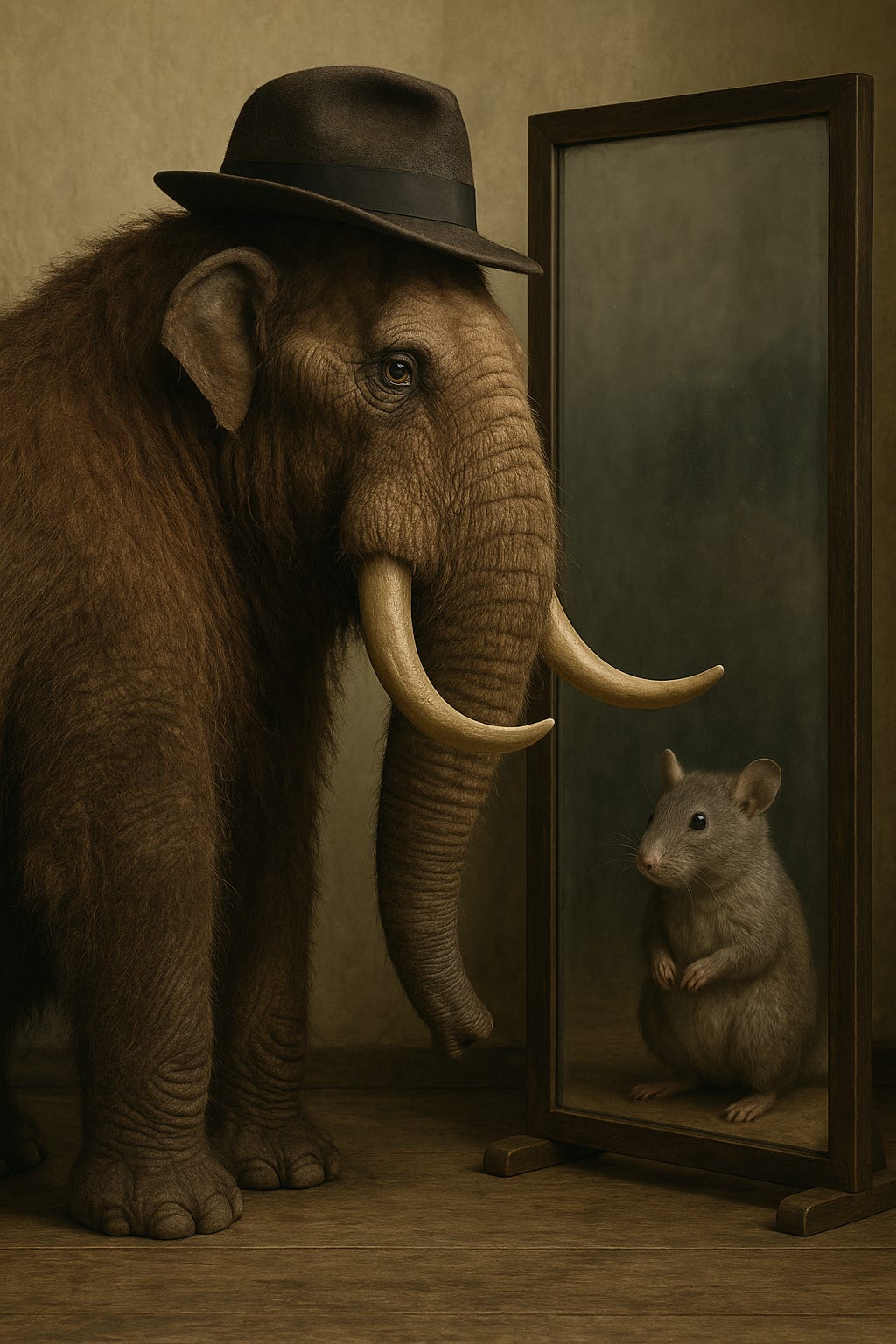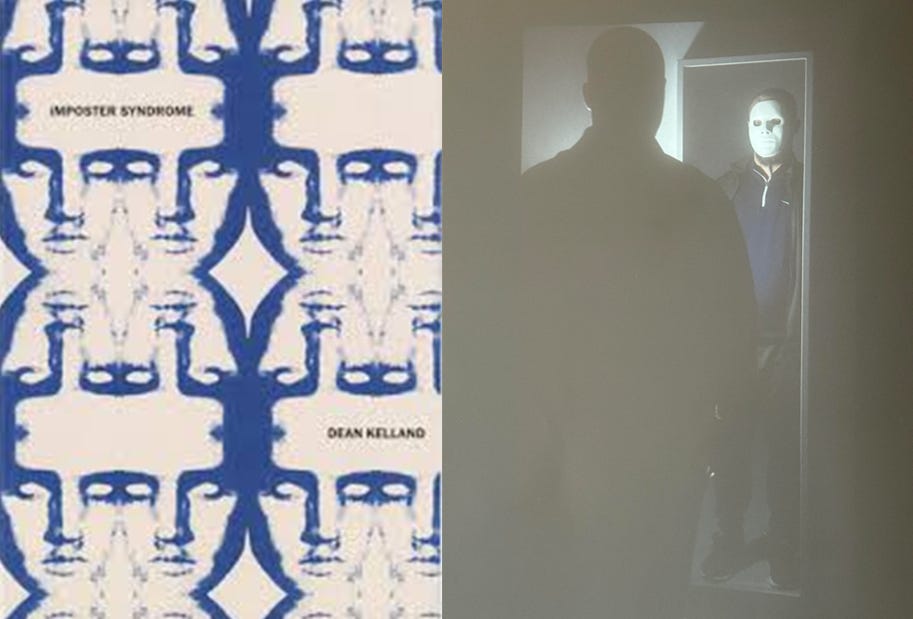Do you see what I see?
"As long as I’m authentic to myself, how could I ever be an imposter?"
So what’s next? Well, there lies the question, one to which I have spent the past two weeks torturing myself over. My deadline passed and yet the word document lays open on the laptop, unpublished. You see, it’s all well and good claiming to be able to throw together some writing, and honestly there is endless topics in my little black book, however as I’m sat here re-editing, for what feels like the hundredth time I can’t help but laugh at the complexities of the human existence.
Why do I feel this is worth mentioning? Well, in recent weeks, I’ve noticed an increase in people sliding into my personal messages offering me all sorts of fantastic options: award-winning marketing systems, millionaire-making partnerships, free websites. and as affirming as this is I can’t help but feel like I’m missing something.
Don’t get me wrong, I do have confidence in my writing and hold belief that my intentions are good, even if my message feels a little confusing at times. The thing is, I kind of do this for myself and it still shocks me that people read my words. They say flattery will get you nowhere, yet me personally, well I have found it rather effective over the years. I mean, who doesn’t enjoy a little bit of an ego massage? I’ve even had someone tell me they would “pay” for my “art”, yet strangely there is one thing that stands out for me, and that’s how uncomfortable the positive response feels.
I’ve been doing this a while now and I am rather confident in my writing at this stage, however this doesn’t detract from the confusion when this is met with a complement, somewhat more so than if not. The anxiety before I hit publish at times is unbearable, the hours spent editing the same piece of work long, and the shock that people take the time to read it, unreal, its as if I see something different in it.
My thought process behind this confusion mainly is, well… why, like what is it? You see for me I enjoy it mainly; it challenges me to push those areas I’m least confident in. The problem is I never expected anybody to read them; I certainly didn’t expect them to garner so much positive attention. Twelve months on still and I struggle to accept it, amidst all this, it’s become rather evident to me that all these promoters so to speak, seem to understand my message a little better than I indeed understand it myself, the problem now being I almost feel burdened with a responsibility to that message, whatever that may be
As always, I am looking for the lesson within this experience, and for all those familiar with my motions, you bet your bottom dollar I’ve found one. You see the writing that I actually publish, well, its somewhat an evolutionary process, and often takes shape as I type, this followed by weeks of editing. Although a familiar process, I feel it does nothing to ease the sense anxiety. Its at one of these junctions I find myself at upon time of writing this post, full of confidence in my message, full of ideas to explore, yet, fighting the words to the page and burdened to deliver something of value. To add to my discomfort there is also a strong lean towards doubt coupled with a feeling of self-exposure, a common side effect I experience with any piece of writing.
It was in an attempt to explore these current feelings I came across a short video titled The Surprising Solution to the Imposter Syndrome, receiving over 1 million views to date. This popular TEDx Talk with Lou Solomon explores her personal experiences and reflections upon recognising these conditions within herself, my favourite bit of this video coming right at the start with the reference to how, by simply being made aware of these concepts, by giving it a name, she was allowed to recognise it for the first time, something to which I am gaining true lived experience and hope to share with the reader.
Imposter syndrome was first identified in 1978 by Pauline Clance and Suzanne Imes, originally believed to present mainly in high-achieving women, a category at my last check, I simply don’t fall into.
However, with current research affirming that the effects of this condition remain free from prejudice, this is now a widely accepted and a common experience among most high performers, students, professionals, and others operating within a creative or competitive context, which means I get to join the club.
So what on earth do people actually mean when they say it? Beware, rabbit hole pending!
Right on the face of it, it closely reflects the name assigned to it, but don’t be fooled, for all its simplicity, the concepts themselves are full of intricacy. This offering any budding researcher the chance for real introspection, which, as we all know, simply butters my parsnips. How am I going to attempt to communicate this to my reader? Ah that is likely to consist of a vague attempt to explain it, then try and offer a conclusion the use of visual art… Yep, you heard me right, I said art!
So a quick Google search (other browsers are available) , and the simplest description of this reads “the internal experience of believing one’s successes are due to luck, deception, or external factors rather than individual ability.” Now, taking my rather layman’s angle on that, it’s fairly easy to recognise moments in my own life to which these conditions may suit, as I’m sure this will also be recognised by the reader, if your already convinced just wait until you hear the key characteristics. Self-Doubt, Fear of Exposure, Attribution of Success, Perfectionism, oh and Overworking making top of that list, Sound familiar?
Well, I’ve ticked all available boxes and made notes on the back, now sitting at my desk and currently considering professional help, but I can’t help but recognise some rather contradictory points here. Like, the idea of “perfectionism” sitting on the same shelf as ‘self-doubt’ throws me a little. Sprinkle in a bit of crediting those achievements to external factors, and top that off with the fear of being exposed as incompetent or unworthy that, to me, already feels like a recipe for dysfunction.
You want to know the crazy thing in all this? It’s completely self-imposed, unique to an individual’s experience, and completely mitigable.
As the agenda in this writing is not necessarily to direct the reader to a cure, I will refrain from expanding in fear of losing my point. However, I will encourage anybody interested in this topic to explore it in detail, with Valerie Young’s work regarding the “five archetypes” providing a great starting point for those willing to dive down that rabbit hole.
For those like myself who, rather than “stumble” into said rabbit hole, take the preferred option of face-planting right into the damn thing, there are a few gems to be discovered along the way. One such gem that was presented to me in a rather fruitless search of the university library is that of a collection of works by the UK based artist Dean Kelland.
A simple search at the university library surprisingly returned very little for imposter syndrome; however, one of the measly two results led me deep into a dark corner of the library that I have only viewed from afar. The book in discussion is thin, yet foolscap in scale; the cover offers a repetitive print-style pattern, this depicting a generic mask in faded pastel blue. Found in the art section, this publication covers the story of the Birmingham-born artist’s collaboration with the residents of HMP Grendon, a therapeutic facility for men serving lengthy sentences.
Drawing on his own personal experiences as a young working-class man, as well as recognising the identity struggles experienced by the prisoners, he was said to have recognised the importance of “raising inmates’” sense of possibility and ambitions, this achieved by creating a cultural production space within the prison itself. As I’m not an art guy, it’s kind of hard to explain, yet the collection does do offer a good representation of imposter syndrome, in a visual sense, I think!
One of the standout exhibitions for me being the sinister, yet intriguing “Absolute Beginners”. This collection of silhouettes pictures the prisoner from behind gazing blankly into a mirror. An external security light offers just enough luminescence to capture this moment in what would otherwise be a blackened room. The lack of identity offering the a feeling of the unfamiliar within the reflection, this not to dis-similar to my own experience in publishing.
Kelland attempted to represent the sense of the psychological presence of the environment within the prison, said to be “imbued as it is with the visual cues of physical incarceration and ontological failure”. Although the original installation was a motion film projected onto canvas, the visuals represented in the book give it a somewhat static appeal, this for me simply encourages the desire to experience it deeper.
What’s the relevance of all this, well, I admit it is tenuous at best, however there is one line that is coupled with these images that delivered that for me: “one set of characters and one stage”. Used to describe the environment for the prisoners upon switching the lights back on, I recognised something in those images. I noticed similarity within the concept of looking at yourself to simply experience the underwhelming. Met with that masked version of yourself that, to your perception, has nothing to offer, in my case the writing, whereas in the artist’s consideration, personality, this represented by the generic use of plain clothing. My dark room, that’s easy its the sense of confusion offered by my imposed responsibility to deliver a message that’s authentic to me, my masked silhouette the vulnerability, and my “one stage” this platform.
For me, the answer sits within the means by which I got the chance to enjoy this message, static. Unlike the artist’s intentions of presenting this in motion, my experience was, well, still. In fact, it’s this stillness that offered me the lesson. You see, I got to simply sit with them, experience them, absorb them, and in their rawest form. Just me and the art matched in authenticity, free from distraction and simply present. For me, this offered insight, a chance to sit with my thoughts in singularity, the representation of being able to sit within this moment of individual discomfort captured perfectly within the art itself only adding to the metaphor.
My realisation in all this is simple, really. When you dim the lights on the noise and influence offered by our simple existence, what can you recognise? Can you stand and look at yourself in the rawest form and simply be present? Can you stand with your true self and simply be?
This level of self-acceptance doesn’t come cheap, and in my own life has only ever increased when I’ve put some real work into exploring the dark corners of my sense of self. Yet with reflection, the answer can be yes! Would coaches improve my writing? would partnerships improve my presence, Yes, I guess so. Would it improve my message on the other hand, most certainly not! What I do know is that if I consider the concept of “one character” and aim to ensure that character is the purest representation of my sense of self, that’s a reflection I will be happy with.
You see its upon learning the true sense of authenticity that I am offered the realisation that this works is indeed now ready for publication.
There is only one me, and that as long as I’m authentic to myself, how could I ever be an imposter?






